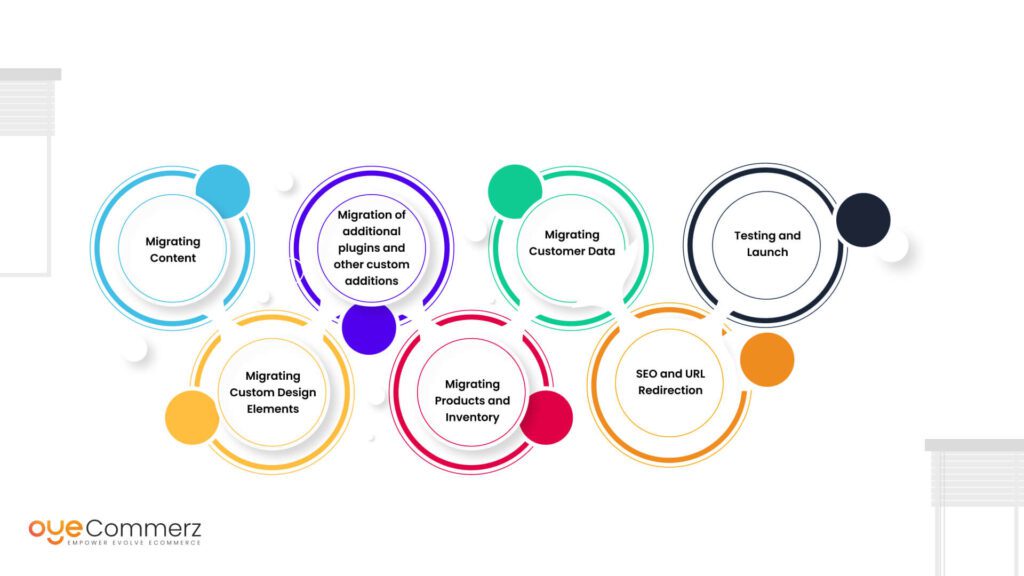Shifting from WP to Shopify marks an exciting step in streamlining your online store processes. As companies expand, choosing a solution that supports scalability, UX, and customization becomes crucial. Shopify has emerged as a preferred choice for online merchants, providing unmatched flexibility, data protection, and ease of use. In this guide, we’ll explore the transformative impact of this migration, discuss the advantages, and provide actionable steps to facilitate a seamless transition.
1. Why Migrate from WordPress to Shopify?
The combination of WordPress and WooCommerce, has served countless online stores. However, as companies scale, issues like plugin dependency, data risks, and complex setups often obstruct progress. Shopify, designed explicitly for digital retail, eliminates these concerns with an comprehensive, intuitive platform. Real data supports this transition—Shopify hosts over 4.4 million stores worldwide, with a reported 10% increase in sales performance for numerous merchants after migration.
2. Key Benefits of Shopify for E-commerce Success
Shopify’s robust ecosystem is tailored for scaling brands. Its notable features include:
- Effortless Design Flexibility: Shopify offers over 80 expertly crafted themes.
- Built-in Features: Capabilities such as Shopify Payments and built-in SEO streamline operations.
- International Expansion: Currency versatility and regional customization empower businesses to expand internationally.
Additionally, Shopify boasts an availability percentage of 99.98%, ensuring your store is always operational.
3. Preparing for WP to Shopify Migration
Before migrating, evaluate your existing setup. Analyze inventory details, client information, and search engine rankings. Resources such as Shopify’s Migration Kit or external tools can simplify this process. Develop a detailed strategy, making sure all resources—product descriptions, images, and blog content—are optimized for transfer.
4. The Importance of Accurate Data Migration
Data migration is a cornerstone of a successful transition. When moving from WP to Shopify, focus on:
- Inventory Details: SKU, item summaries, and categories.
- Customer Data: Emails, purchase records, and preferences.
- SEO Optimization: Preserve meta tags, URLs, and redirects to avoid SEO losses.
Use apps like LitExtension to facilitate seamless migration while reducing mistakes.
5. Tailoring Your Shopify Store to Fit Your Brand
After the move, customizing your Shopify store ensures it aligns with your business identity. Take advantage of Shopify’s intuitive page builder to design pages effortlessly. Shopify's themes are mobile-responsive, ensuring a seamless user experience across devices—a critical factor, given 74% of online shopping comes from mobile users.
6. How to Protect Your SEO Rankings When Switching Platforms
SEO is vital for preserving your visibility during migration. Shopify is highly optimized for search engines with organized link formatting, preloaded features, and seamless blog integration. Ensure:
- Set up URL forwarding for old URLs.
- Enhance updated content with targeted phrases.
- Use Shopify's apps Plug in SEO to monitor performance after the switch.
7. Post-Migration Testing
After finishing the transfer, conduct thorough testing.
Review: - Website speed (Shopify boasts faster speeds compared to WP).
- Payment integration reliability and checkout processes.
- Adaptability across devices.
Quality assurance guarantees your store delivers a smooth shopping journey from the start.
8. Real-Life Success Story
An example of effective platform switching is Gymshark, a fitness apparel brand that moved to Shopify. After the switch, the company experienced a 60% increase in mobile sales and significantly lowered site downtime. This showcases the potential of Shopify in enhancing e-commerce growth.
9. Challenges and Solutions
Migration is not without obstacles, such as data integrity and reconfiguring custom functionalities. However, Shopify’s extensive assistance and third-party experts make overcoming these hurdles manageable. Partnering with experienced Shopify developers ensures a trouble-free transition.
10. Starting Your Journey with Shopify
Migrating from WP to Shopify represents a forward-thinking approach to e-commerce. By focusing on growth, simplifying management, and improving buyer satisfaction, Shopify empowers businesses to thrive in challenging industries.
Conclusion
Transitioning from WP to Shopify offers a smart solution that can significantly boost your e-commerce success. With a well-structured strategy, the right tools, and professional guidance, you can achieve new growth opportunities.
Excited to start the journey? Let’s discuss how our Shopify migration services can transform your online store. Get in touch today, or consider: Migration from WordPress CMS Is it time to seize Shopify’s advantages for your store? Expert Shopify developers
